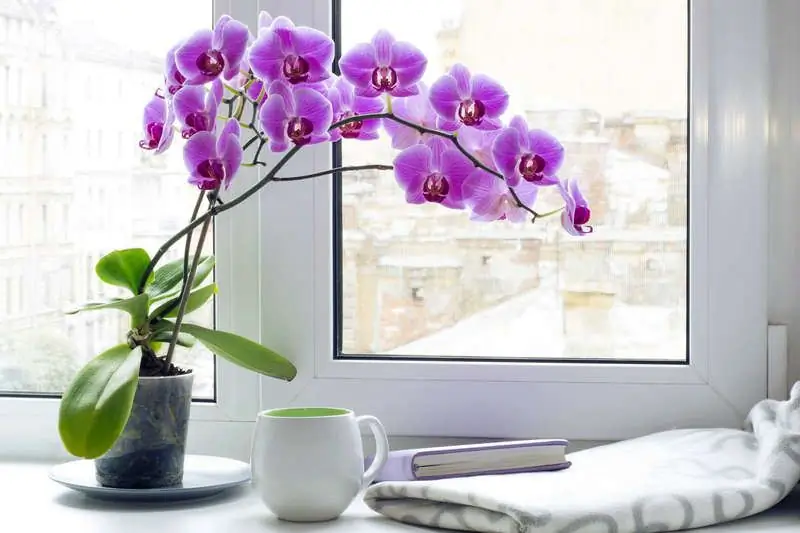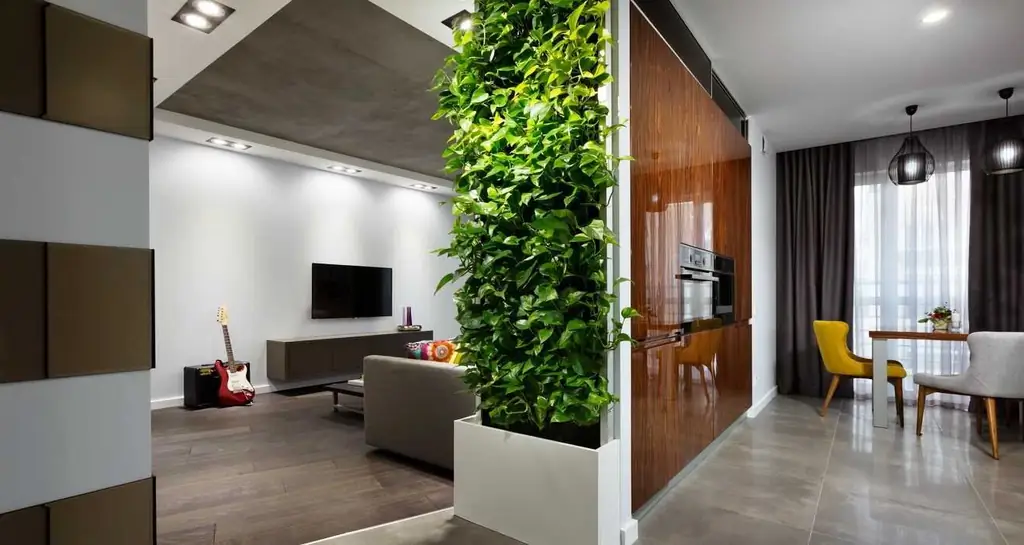
Table of contents:
- Author Bailey Albertson [email protected].
- Public 2023-12-17 12:53.
- Last modified 2025-06-01 07:32.
10 orchids that are best suited for growing in the room

Tropical orchids are famous for their luxurious flowers of bizarre shapes and colors. Many of them, with proper care, are quite suitable for growing at home.
Phalaenopsis
Phalaenopsis are unpretentious and hardy orchids with white, yellow, pink and lilac flowers. They are not too demanding to care for and are well suited for beginners. These orchids do not have a dormant period, they need a constant temperature of +20.. + 25 ° C throughout the year and regular moderate watering 1-2 times a week. For phalaenopsis, air humidity is sufficient in the range of 40-50%, they can simply grow on a windowsill. They are relatively shade-tolerant, but backlighting is desirable for winter flowering.
My first orchid was a lilac phalaenopsis in a large transparent plastic glass with pine bark, bought in bloom in the hot Italian spring. I put it on the northeast window, away from the killing southern sun. The air in that region was humid enough even in the heat, so watering was sufficient once a week. Watered when a slight hint of wrinkles appeared on thick leaves. Despite my fears, the plant felt normal, gradually opening the buds on the flower arrow. Flowering lasted several months before my departure.

Phalaenopsis is a beautiful and unpretentious orchid for beginners
Paphiopedilum (lady's slipper)
Paphiopedilum is easily recognized by the characteristic shape of its flowers, painted in muted yellowish, greenish, pinkish-lilac and brownish tones. These are unpretentious, relatively shade-tolerant orchids that require high humidity of 60-70%. The substrate in the pot should be slightly damp all the time without excess water. Suitable for indoor shoes are temperatures of +15.. + 18 ° C in winter and +22.. + 28 ° C in summer.

Paphiopedilum is easy to recognize by the original flower shape
Tselogin
Tselogyns are shade-tolerant orchids light in room culture with white, yellow or greenish flowers. The most popular is the coelogine comb, which is considered the ideal orchid for beginners. It has white flowers with a yellow spot and a short (2-3 weeks) dormant period immediately after flowering. This species is not capricious to the quality of water and grows well on a windowsill in normal room conditions, prefers a cool winter with a temperature of about + 15 ° C.

Unpretentious cellogyne comb is ideal for beginners
Cattleya
Cattleya are very spectacular orchids with luxurious delicate flowers of white, pink-lilac and purple shades. They are photophilous, require high air humidity in summer (at least 50-70%) and light drying of the upper layer of the substrate during winter dormancy. Optimum temperatures:
- in summer +25.. + 28 ° C during the day and +18.. + 20 ° C at night;
- in winter +20.. + 22 ° C during the day and +14.. + 16 ° C at night.
The difference between day and night temperatures is necessary for flowering Cattleya.

Cattleya is a spectacular orchid with luxurious flowers
Lelia
Lelia is the closest relative of the Cattleya; their numerous hybrids have been created. Laelias flowers are white, yellow, pink, lilac. These are high-altitude orchids that require good lighting, humid air (relative humidity not less than 60-80%), moderate watering and daily temperature differences.
Optimum temperature conditions:
- in summer +23.. + 25 ° C during the day and +17.. + 19 ° C at night;
- in winter +18.. + 20 ° C during the day and +13.. + 15 ° C at night.

Lelia is the closest relative of the Cattleya
Cymbidium
Cymbidium flowers are white, yellow, green, pink, lilac, brownish. Large-flowered cymbidiums grown in greenhouses for cutting with one and a half meter peduncles in the room will not bloom: in winter they need a lot of daylight and a temperature of about +10.. + 12 ° C. In the apartment on the windowsill, you can grow miniature varieties of cymbidiums, for which wintering at +16.. + 18 ° C is normal.

Cymbidiums are often grown in greenhouses for bouquets
Dendrobium
Dendrobiums are light-loving orchids with thick, articulated stems and white, yellow, lilac or pink-red flowers. They need a cool wintering at a temperature of +10.. + 15 ° C. Evergreen species are watered moderately in winter, deciduous ones hibernate almost without watering so as not to rot. Miniature dendrobium varieties are suitable for growing in a room.

Dendrobiums prefer a cool winter
Oncidium
Oncidiums have yellow, brownish or pink flowers of a characteristic recognizable shape with a large and wide lower petal. These are light-loving orchids, most of oncidiums need a temperature of +18.. + 25 ° C throughout the year. They are not very demanding on air humidity, they can simply grow on the windowsill, but they are afraid of excessive watering.
My mother in Kazan successfully grew a miniature oncidium with yellow flowers on the eastern window. The plant died from waterlogging during one of its long business trips, when a person who was not used to orchids looked after the flowers.

Oncidium is a thermophilic orchid with a memorable flower shape
Odontoglossum
Odontoglossum flowers are white, yellow, lilac, pink, reddish, often with a beautiful speckled pattern. These are alpine orchids that require diffused light, high air humidity (at least 60%) and prefer year-round temperatures ranging from +15 to + 22 ° C. They have very delicate roots, which suffer greatly from both excess and lack of moisture. Intergeneric hybrids are more suitable for indoor culture than natural species of odontoglossum.

Odontoglossum - delicate mountain orchid
Miltonia
Miltonia are the closest relatives of odontoglossums, these orchids are crossed among themselves to create more hardy hybrid varieties. Miltonia also need high air humidity from 60% and above, but they are more resistant to high summer temperatures up to +25.. + 27 ° C. In winter, temperatures are optimal for them +14.. + 16 ° C. Miltonium flowers are white, pink, lilac, burgundy.

Miltonia is the closest relative of odontoglossum
Growing orchids in a room is an exciting activity available even to a novice florist. Having gained experience with the most easy-to-care varieties, you can acquire more capricious types.
Recommended:
How To Use Eggshells As Fertilizer (in The Garden, For Seedlings And Indoor Plants And Not Only) + Reviews

The properties of the eggshell, its beneficial effect on the soil, plants. Details on the use of shells as fertilizer in the garden, for seedlings and indoor flowers
Interior Partitions: Types Of Construction And Material, Their Advantages And Disadvantages, Combination Options In The Interior, Photos And Videos

What are interior partitions. What materials, what design they are. Instructions for the manufacture of foam blocks, drywall, glass blocks
Wild Forest Cat: Photos, Species And Names, Nature And Lifestyle, Breeding Cats

External features of a wild forest cat. The distribution area of the animal. The nature and habits of the predator. Reproduction issues. Wild forest cat in captivity. Reviews
Why You Can't Keep Orchids At Home: Folk Signs And Facts

Why you can't keep orchids at home: rationalizations and superstitions. Folk signs concerning the flower
Succinic Acid For Indoor Plants, Including Orchids: How To Use It Correctly

What is the use of succinic acid for indoor plants. The use of succinic acid: solution preparation, processing methods
